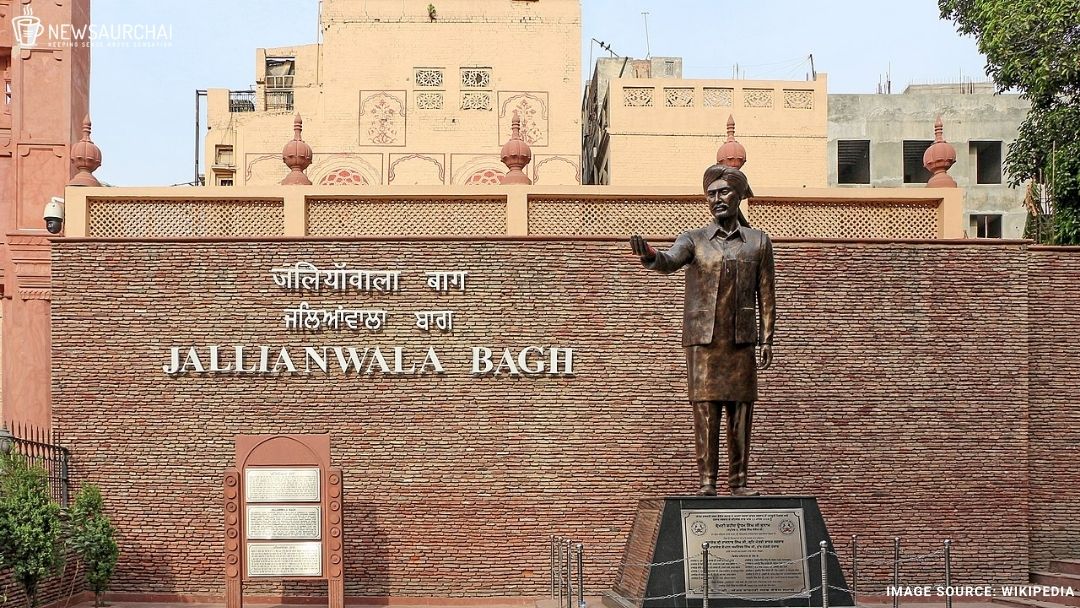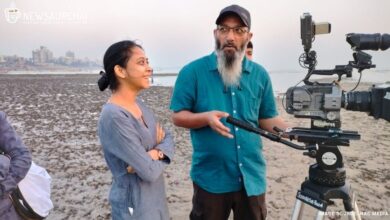
Reginald Dyer, military commander of Amritsar on April 13, 1919, announced a curfew at 20:00 that night and had banned all the processions and public meetings of four or more persons. This notice was not widely disseminated, and many villagers gathered in the Jallianwala Bagh to celebrate the Hindu and Sikh festival Baisakhi. They were having a peaceful protest against the British government for arresting national leaders Satyapal and Saifuddin Kitchlew, soon after which General Dyer ordered his troops to open fire on unarmed civilians.
Background
On 10th March 1919, the British passed a new law- The Rowlatt Act. Indian people referred to the Rowlatt Act as the ‘Black Act’. People were arrested and kept in jail for 2 years, without any trial. There was no appeal for the same. Mahatma Gandhi brought in the anti- Rowlatt Satyagraha. This was one of the most successful Satyagrha’s held. Soon, two hartals were organised by Dr Saifuddin Kitchlew and Dr Satya Pal. Frightened by the Hindu- Muslim unity, and the administration decided to arrest Dr Saifuddin Kitchlew and Dr Satya Pal, and were secretly taken to Dharmshala. Supporters went to the deputy commissioner asking for the release of both the arrested leaders. Hundreds of people came out on the streets to protest. Crowd also ransacked, looted and burnt British buildings. On April 10, 1919, five British officers were killed. during the riots. Marcella Sherwood, a missionary teacher was accosted and assaulted. On 11th April 1919, which was supposed to be a day of mourning, the situation got worse. General Reginald Dyer was brought to Amritsar to control the situation there.
What Happened At Jallianwala Bagh
Jallianwala Bagh is a memorial garden of historical importance, located in Amritsar, Punjab. During the British era, public meetings were held here.
Several farmers, traders, and merchants were present there to celebrate the Baisakhi. The city police closed the fair in the afternoon, and many people were drifted into the Jallianwala Bagh. Reginald Dyer ordered troops of the British Army to fire rifles into the crowd of unarmed Indian civilians in Jallianwala Bagh. Dyer, along with his British Army, arrived at the Bagh. He had brought two armoured card and machine guns with him.
Horses surrounded the Bagh, and the main entrance was heavily guarded by armoured vehicles. Dyer blocked the main entrance without warning the crowd and ordered his Army to fire bullets on Indians. The firing continued for approximately ten minutes. This has led to widespread bloodshed.
Jallianwala Bagh Massacre was caused by British General Dyer, who want to teach Indians a lesson to not indulge in protest against the British government. The Amritsar massacre of 1919 was significant in causing deterioration in relations between the British and Indians. It is remembered as a ‘watershed that irrevocably put Indian nationalist on India’s path to independence.
Casualties In The Jallianwala Bagh Massacre
Dyre blocked the main entrance, fired rifles, and killed over 379 people, and over 1,200 people were injured. Apart from death directly from shooting, many people died of crushing in the stampedes at the narrow gates or jumping into the solitary well. The wounded could not be moved from where they had fallen due to curfew, and they died during the night.
In the casualties declared by Indian National Congress, over 1,500 people were injured, and over 1,000 have died. After firing, the troops immediately withdrew from the place, leaving behind the dead and wounded bodies. Dyer stated in a report that,” I have heard that between 200 and 300 of the crowd were killed. My party fired 1,650 rounds”.
Dyer declared with pride that the massacre was a deliberate act done to shoot down people’s moral effect if they were going to continue the meeting. The figure offered by Sewa Samiti says that 379 were identified as dead, and approximately 1,200 were wounded, out of whom 192 were seriously injured.
Aftermath
The Jallianwala Bagh massacre has caused many moderate Indians to abandon their loyalty to the British and become nationalists distrustful of British rule. The Bagh massacre was marked as the turning point in India’s modern history because it left a permanent scare on Indians and Indo-British relations. A British newspaper called it one of the bloody massacres of modern history.
Jallianwala Bagh is a historic garden and memorial of national importance in Amritsar, India. The bullet marks can still be seen on Jallianwala Bagh’s walls, now a National memorial. A memorial was set up by India’s government in 1951 at Jallianwala Bagh to remember the spirit of Indian revolutionaries and the people who lost their lives in a brutal massacre. It stands as a symbol of struggle and sacrifice and to instil patriotism amongst the youth. The massacre stirred nationalism across India and profoundly affected one of the movement’s leaders, Mohandas Gandhi.
The Amritsar massacre in which almost 400 Peaceful Indians, mostly Sikhs, were killed was marked as a turning point in the independence movement. Like Gandhi, who previously pushed for moderate reforms and limited self-rule, the massacre convinced him to push for complete independence.





